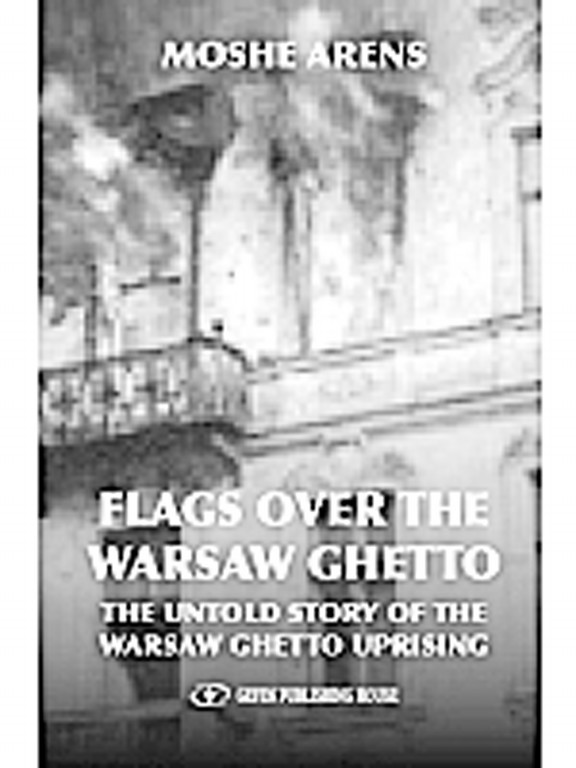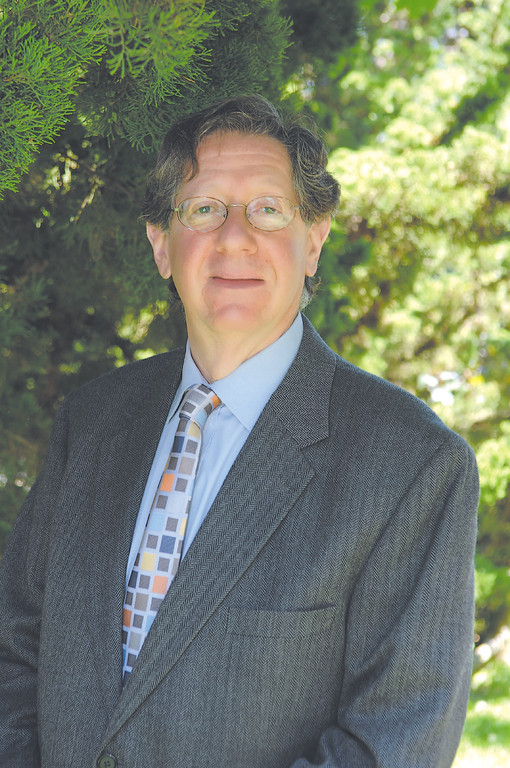The Kosher Bookworm The 70th yahrtzeit of Rabbi Menachem Ziemba’s martyrdom: A tribute to a Warsaw Ghetto legacy
In reading former Israeli Defense and Foreign Minister Moshe Arens’ latest work, “Flags Over the Warsaw Ghetto” [Gefen Publishing, 2011] and interviewing him this past summer 2012 in Jerusalem, I was given the opportunity to become more fully acquainted with the decisive leadership role that Rabbi Menachem Ziemba played in the uprising against the Nazis 70 years ago this coming Passover.
This review will, for the most part, reflect upon Rabbi Ziemba’s role and bring to light for many of you the vital role he played in garnering support for the revolt that was to bring the Nazi war machine to a temporary halt at the hands of a small and poorly armed insurgency.
In a statement to this writer, the distinguished scholar, Dr. Pesach Schindler, author of “Hasidic Responses to the Holocaust in the Light of Hasidic Thought,” wrote the following in tribute to the legacy of Rabbi Ziemba:
“Harav Menachem Ziemba, H”yd, represents a role model of Kiddush Hashem during the Shoah in multi-dimensions.
“Among the rabbinic leaders caught in the tragedy of the gradual destruction of the renowned Warsaw Jewish community, Rabbi Ziemba represented a remarkable counterpoint to either despair or quietistic fatalism.
He not only was a minority rabbinic voice calling for armed resistance. He redefined such Kiddush Hashem as Kiddush Ha’Chayim – the ultimate mitzvah of sanctifying life.”
In his book, Dr. Schindler stated the following:
“Rabbi Ziemba summarized the Kiddush Ha’Chayim motif during a zealous plea for resistance prior to the Warsaw Ghetto uprising in April 1943:
‘Thus, by the authority of the Torah of Israel, I insist that there is absolutely no purpose nor any value of Kiddush Hashem inherent in the death of a Jew. Kiddush Hashem in our present situation is embodied in the will of a Jew to live. This struggle for aspiration and longing for life is a mitzvah to be realized by means of nekamah, vengeance, mesiras nefesh, and the sanctification of the mind and will.’”
Dr. Schindler further states that, “Rabbi Ziemba, a key religious leader in the Warsaw Ghetto, was significantly influenced by the Hasidic school of Kotzk, of which his grandfather was an ardent follower. The Kotzker school was known for its emphasis on intellectual depth, a disdain for ceremony, intellectual honesty, and a relentless search for new horizons in the realm of the holy.”
This devotion to the Kotzker hashkafah and teachings was recently reaffirmed to me in a letter from Prof. Susannah Heschel concerning the close relationship that Rabbi Ziemba had with her father, the world renown Rabbi Dr. Abraham Joshua Heschel, of blessed memory.
“The connection with my father is strong and deep – certainly with their shared devotion to the teachings of the Kotzker rebbe – my father talked about how much he was grateful for having known people who could convey to him orally the teachings of the Kotzker, since they were not printed, and Rabbi Ziemba was one such person. I would also like to point out that my father’s knowledge of halacha was profound as testified by his having received smicha from Rabbi Ziemba. Rabbi Ziemba launched my father as a rabbi.” This legacy was but just one signpost of the influence that Rabbi Ziemba had on the Jewish youth of Poland in those inter-war years.
This leadership was to be reflected time and again during the Warsaw Ghetto years. Moshe Arens, in his excellent narrative of those years, cites in detail below the experience of Dr. Hillel Seidman’s visit to Rabbi Ziemba’s underground yeshiva in the ghetto on January 10, 1942.
“Seidman was led into the next room where a Gemara lesson was in progress. The yeshiva students were being allowed the use of the bunker by the engineers who built it. Some of them approached Seidman and told him that they were joining the Revisionist resistance movement, but were in need of funds for the purchase of weapons. ‘We have to be prepared for war,’ they told him. Sixty-year-old Rabbi Menachem Ziemba, one of the great rabbis of Poland and one of the leaders of Agudat Yisrael in the ghetto, had encouraged his students to prepare for resistance to the Germans. Encouraged by their rabbis, the yeshiva students, who until now had kept apart from the resistance organizations, were now joining the resistance….
A year later, Seidman was present at a discussion at which Rabbi Ziemba was also in attendance. Rabbi Ziemba said that, looking back on the period of the great deportation, it was a mistake to go willingly to the umschlagplatz—the Jews should have resisted. ‘But we deluded ourselves. A clever and intelligent people had lost its ability to think clearly. All the time we thought that maybe, or despite everything….And we thought that there was reason to believe. Our enemies spoke of Jews of great influence – Bernard Baruch, Henry Morgenthau, Hore-Belisha. Why did they not remember us, their brothers who were destined to be exterminated? We hoped and believed that, in time, help would arrive. Were it not for this illusion, we might have behaved differently. And in addition, we were greatly mistaken when we thought our enemy was stupid, while we were the smart ones. We should have understood from the beginning that this enemy is out to destroy us. And now we must resist and not give ourselves up willingly to the enemy.’”
Arens continues with the following:
“And then Rabbi Ziemba added, ‘There are different ways to sanctify the name of G-d. If they demanded that the Jews convert, like in Spain in the days of the Inquisition, and one could save oneself by conversion, our death would constitute the sanctification of the name of G-d. Today the only way to sanctify the name of G-d is to offer armed resistance.’ On hearing Rabbi Ziemba’s words all arguments ceased in the Orthodox community. The verdict had been given.”
As noted above, these words, in harsher declarative form, were to be reiterated that next year right before the uprising.
I conclude Arens’ narrative with the following haunting episode:
“Seidman, listening to Rabbi Ziemba, remembered meeting in Warsaw shortly before the war Wolfgang von Weisel, the Revisionist leader who had come from Palestine to speak at meetings in Poland.
‘I have but one mission here in Poland,’ von Weisel told him. ‘To repeat in every city and town, to young and old Jews. Learn to shoot!’ “
Rabbi Zechariah Fendel, of blessed memory, in his classic work, “From Dusk to Dawn,” tells us of the following episode that speaks even further of Rabbi Ziemba’s greatness:
“Before the final liquidation of the Warsaw Ghetto, a proposal suddenly came from the highest echelons of the Roman Catholic Church to save Rabbi Menachem Ziemba, Rabbi Samson Stockhammer, and Rabbi David Shapiro, the last three rabbis of the Warsaw Ghetto. The proposal was submitted to the three men, and they now had to decide whether to accept it or reject it. This was a supreme test of character for the last remnant of the once world-famous Warsaw Rabbinate.”
To their ever-lasting credit, they chose to stay with their people and not abandon them at this hour of dire need.
Rabbi Fendel continues this saga with the following:
“Rav Menachem Ziemba was killed during the Warsaw Ghetto uprising [19th of Nissan, Shabbos chol hamo’ed]. His nephew, Rabbi Avraham Ziemba, who witnessed this event, also saw the bunker in which Rav Ziemba had hidden his unpublished manuscripts, go up in flames. These included the one thousand page manuscript, Machazeh HaMelech, on the Rambam’s Yad HaChazakah.
“Making reference to this tragic episode, his nephew, Avraham, who survived the Holocaust, subsequently wrote an article entited, ‘In the Flames of the Warsaw Ghetto,’ in which he observes that when he saw Rav Ziemba’s manuscripts going up in flames, after having seen him slain only the day before, he felt as though he had seen his uncle killed – twice.”
Rabbi Ziemba was a true hero and fighter for his people. This was further demonstrated in a January 14, 2013 essay in Ha’aretz by David Green, who made note of the following:
“Though not personally involved in the physical fighting that he endorsed, Rabbi Ziemba was defiant in other ways, He dared to build a sukkah on the roof of his apartment building in the ghetto, and he continued to teach yeshiva students in underground bunkers….The final battle of the Warsaw Ghetto uprising began on Passover eve, April 19, 1943. That night, Rabbi Ziemba held a seder at his home, despite the fact that fighting had been raging around him during the day. Several days later, as the Germans were systematically setting fire to the houses of the ghetto, he emerged from his home and was shot dead in the street.
“A beit din decided to bury him temporarily in the courtyard of 4 Kupiecka
Street. The rest of his family was deported to Treblinka, where they perished.
“In 1958, when it became known that the Polish government was going to rebuild part of the ghetto, including the section where Rabbi Ziemba was buried, two of his nephews were given permission to search for his remains. After extensive research and work, they found the grave. Its contents were transferred to Israel, for reburial on Har Hamenuchot, in Jerusalem.”
This coming Shabbos Chol Hamoed Pesach, March 30, 2013, marks the 70th yahrtzeit of Rav Ziemba, H”yd. In his introduction to the new Koren Pesach Machzor, Rabbi Jonathan Sacks notes the following:
“In one of the most haunting of all prophetic visions -- we read it on Shabbat Chol Hamoed -- Ezekiel sees his people as a landscape of corpses, a valley of dry bones. They are devastated. They say avda tikvatenu, our hope is gone. G-d then asks him: Son of man, can these bones be revived? The prophet does not know what to say. Then he sees the bones slowly come together and grow flesh and skin and come to life again.
And G-d says: “Behold I shall open your graves and lift you out of your graves, My people; I shall bring you to the land of Israel. And you will know that I am the Lord when I open your graves and lift you out of your graves, My people.”
As we read these words on that Shabbos this year, think of Rabbi Menachem Ziemba of the Warsaw Ghetto uprising and remember him and all those who gave their last full measure of themselves…. And remember the dry bones whose future in life is yet to come.

 47.0°,
Light Drizzle Fog/Mist
47.0°,
Light Drizzle Fog/Mist 







